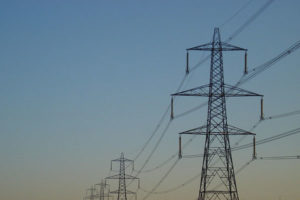According to some energy experts, battery-powered vehicles are poised to play a significant role in supporting electric grids rather than straining them. This is possible due to their ability to store energy and supply it back to the grid or to buildings during times of low energy supply or high energy demand.
Utility Companies and Electric Vehicles
Some utility companies are intrigued by this possibility and view it as a method to enhance grid capacity and resilience, particularly during extreme weather events linked to climate change. Greater use of electric vehicles in this manner could enable utilities and homeowners to lessen planet-warming emissions by relying more heavily on intermittent renewable energy sources like solar and wind.
Electric Vehicles as Backup Power
Despite the potential benefits, few electric vehicles currently have the capability to provide backup power.
However, executives at Tesla, the leading electric car company, and other automakers have stated that they are developing updates to enable a broader range of vehicles to do so. Electric vehicles could also support the grid by offering backup power.
A Business Insider article reports that automakers and utilities are exploring bidirectional charging technology. This innovation would allow electric vehicles to supply power back to the grid during peak demand hours, potentially reducing strain on the grid and enhancing its reliability.
Despite these advancements, there are concerns about whether the grid can handle the increased electricity demand from electric vehicles.
For instance, if all cars in the U.S. were electric vehicles charging at 7kW, the grid would require nearly double its current capacity. Addressing this issue will necessitate significant modifications to power generation and distribution systems.
The Canadian Case

A transmission tower, also known as an electricity pylon or simply a pylon in British English and as a hydro tower in Canadian English, is a tall structure, usually a steel lattice tower, used to support an overhead power line. (Christian Guthier)
In Canada, the electricity grid will need substantial upgrades to meet the increased demand from electric vehicles and reach its climate goals.
According to a report by the Canadian Climate Institute, every aspect of the provincial and territorial power generation and distribution systems will need to undergo significant changes to meet future demand. Failing to do so could result in consequences ranging from missing climate goals to brownouts.
By 2035, the federal government aims to achieve net-zero electricity generation, and all new car sales will have to be zero-emission.
The Institute’s report, titled ‘The Big Switch, Powering Canada’s Net Zero Future’, relies on multiple studies which suggest that the electricity system will need to double or triple its capacity by 2050. To meet its climate goals, up to 75% of that additional power must come from wind and solar.
Need for More Battery Storage and Grid Adaptability
Moreover, Canada’s electricity systems will require increased battery storage and the ability to adjust to demand peaks as both vehicles and many home heating systems convert to electric.
“If we see more people … using electric vehicles, if we see more people switching toward electric heat pumps — and yet the systems are not well equipped to manage that increased demand, as well as the timing of that demand — then there could be some real issues,” warns Caroline Lee, one of the report’s authors and a senior researcher at the institute.
Electric vehicles and renewable energy are a perfect match. Charging electric vehicles with renewable energy sources can significantly reduce their environmental impact.
However, currently, too few electric vehicles are powered by renewable energy.
Concluding Remarks
Electric vehicles have the potential to provide backup power for homes and support the grid.
However, Canada’s electricity grid will need substantial changes to meet this increased demand and achieve its climate goals. These changes include increasing grid capacity, transitioning to renewable energy sources, and improving battery storage. Governments, utilities, and automakers working in unison can help turn this vision into reality.













Comments